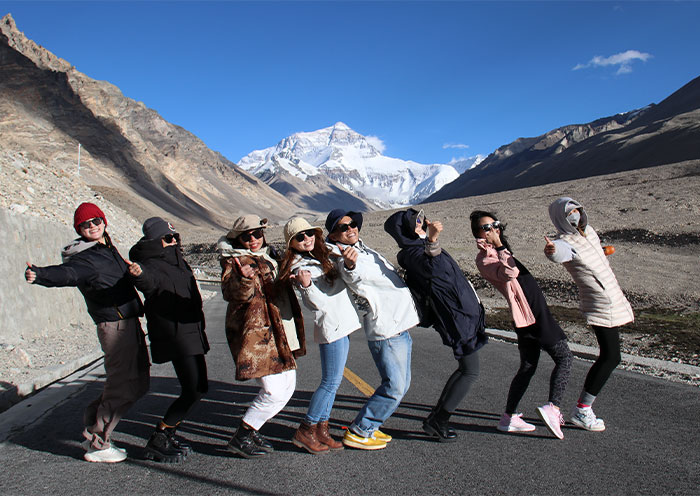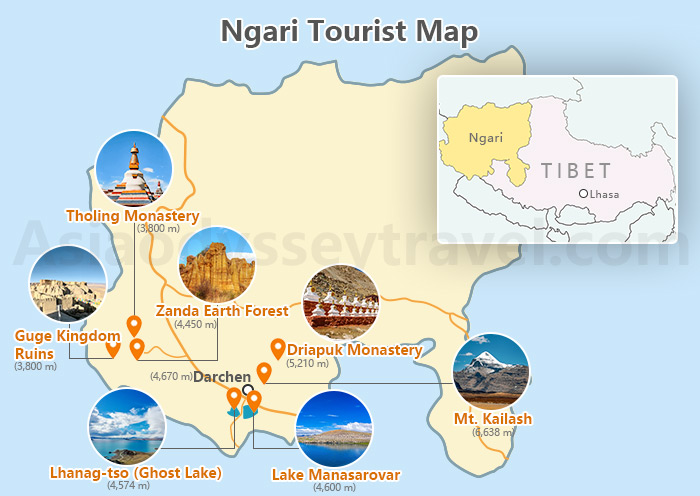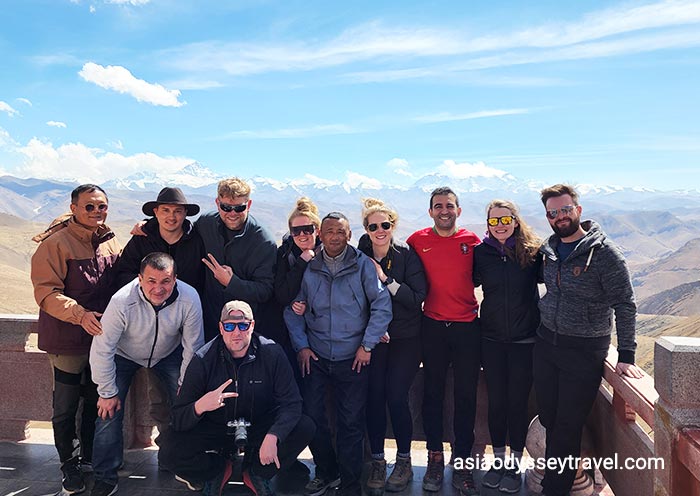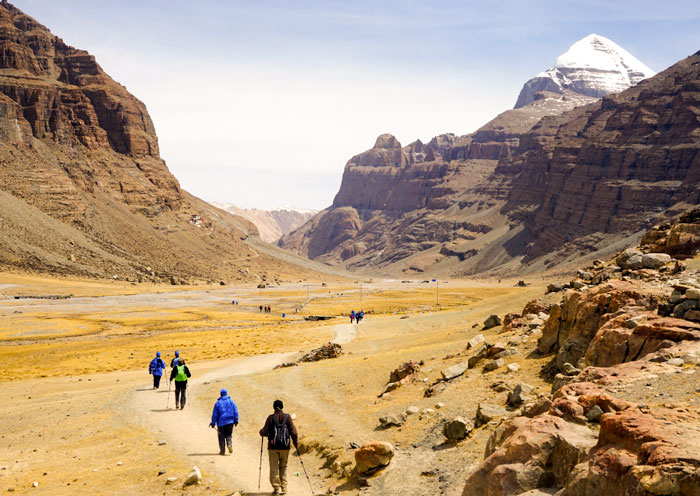1. Mount Kailash: The Most Revered Mountain in Tibet
Mountain Location: Transhimalaya region of Tibet, China
Mountain Elevation: 6,638 meters (21,778 feet)
Gangs Rin-po-che (冈仁波齐), also known as Mt. Kailash, is not the highest Tibetan Mountain, yet it holds immense spiritual importance for millions worldwide. With Mount Kailash MysteriesIt is revered as a sacred site in four different religious traditions: Bon Religion, Buddhism, Hinduism, and Jainism. Each year, thousands of individuals embark on a pilgrimage to Kailash, firmly believing that circumnavigating the mountain on foot will bestow good fortune upon them. Tourists also love the Mount Kailash Trekking experience. Additionally, the holy Mansarovar Lake (玛旁雍错), which encircles Kailash like a celestial body of water, is said to cleanse all sins. Mansarovar Lake would be a key element in Mount Kailash Travel Plan.
This sacred Tibet mountain of Kailash also serves as the source of four renowned rivers in Asia: the Indus River (known as Shiquan River in China), the Sutlej River (a significant tributary of the Indus River), the Yarlungzangpo River (also known as the Brahmaputra River), and the Ganges River.
The Himalaya region is renowned for its breathtaking natural beauty. Throughout the kora, pilgrims traverse a landscape adorned with snow-capped peaks, turquoise lakes, and lush valleys.
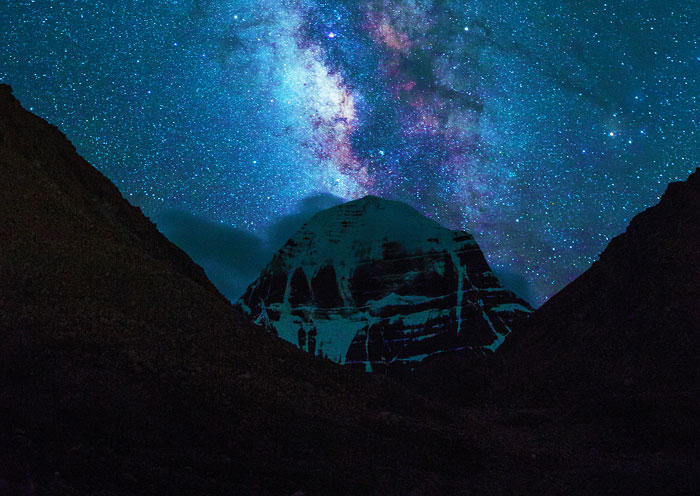

Mount Kailash, the Sacred Tibetan Mountain not to be climbed
There are mountaineers asking if they can climb Mount Kailash, or Gangrenpoche. The straightforward answer is no. It would be one of few Tibetan Mountains that you could not climb. Here’s are the reason:
Religious Significance: Mount Kailash is sacred to multiple religions: Hinduism, Buddhism, Jainism, and Bon. Climbing it disrupts spiritual balance.
Cultural Significance: Mount Kailash holds deep cultural significance for Tibetans. Climbing it disrespects their traditions.
Practical Concerns: Climbing Mount Kailash is perilous due to its remote Mountain Location, high altitude, and unpredictable weather.
Local authority prohibits climbing to protect the mountain and honor religious beliefs. In the mean time you can still admire the Mount Kailash with you spiritual Kora pilgrim journey.
While you can not climb this Tibet Mountain there is an even better thing to do at Mount Kailsah, that would be the Kora. Read on to find out more.
Spiritual Journey to Mount Kailash (Kangrinpoche)
The Mount Kailash Kora represents a profound spiritual pilgrimage for many, symbolizing the path to enlightenment and cleansing.
Along the journey, pilgrims encounter monasteries , prayer flags, and stupas, gaining deeper insight into the spiritual beliefs of the Mount Kailash region.
Those who have undertaken the Mount Kailash Kora consistently express the transformative nature of the journey. They describe experiencing deep peace, spiritual awakening, and a profound connection with nature.
To stand in awe of the stunning views of the Holy Mountain Kailash in Tibet alone is awakening enough. To actually walk a pilgrimage route and make it through Mount Kailash, the Gangrenpoche, would be something else—something life-changing. Knowing that there is something greater than yourself, something pure, something sacred is right there with you being a part of it, is a profound experience.
Mount Kailash offers two distinct circumambulation paths known as the inner and outer kora, each with unique significance and challenges.
Inner Mount Kailash Kora: Closest You can get to the Gang Rinpoche
Length: Approx. 33 kilometers (21 miles)
Duration: 2-3 days
Difficulty: More challenging due to higher Mountain Elevation and rugged terrain
Significance: Intense and spiritually profound pilgrimage experience
The inner kora takes a closer route to the base of Mount Kailash, providing intimate views of Mount Kailash’s majestic peak. It traverses diverse landscapes including valleys, hills, and high-altitude meadows. This inner path is revered for its spiritual significance, believed to bestow greater blessings and rewards.
Outer Mount Kailash Kora: Recommended Route for Mountaineers
Length: Approx. 56 kilometers (35 miles)
Duration: 3-4 days
Difficulty: Less challenging than the inner kora
Significance: More accessible to a wider range of pilgrims
The outer kora follows a broader path encircling Mount Kailash, offering panoramic vistas of surrounding mountains and valleys. It is generally easier to undertake, suitable for pilgrims of various ages and fitness levels. The outer kora remains a sacred pilgrimage, believed to bring blessings and spiritual benefits.
Note: It is important to note that supply checkpoints and accommodation options are available along the Kora, often requiring advance booking/planing or local guidance. Moreover, obtaining travel permits, such as the Tibet Travel Permit, is crucial for visiting Mount Kailash.
Finding out info like How to Get to Kailash, Best Time to Visit Kailash,Kailash Trekking Cost, would be the esay part, we have got you covered right here. In the mean time to ensure a well-prepared and organized Mount Kailash trip, it is advisable to consult a professional travel agency in advance.
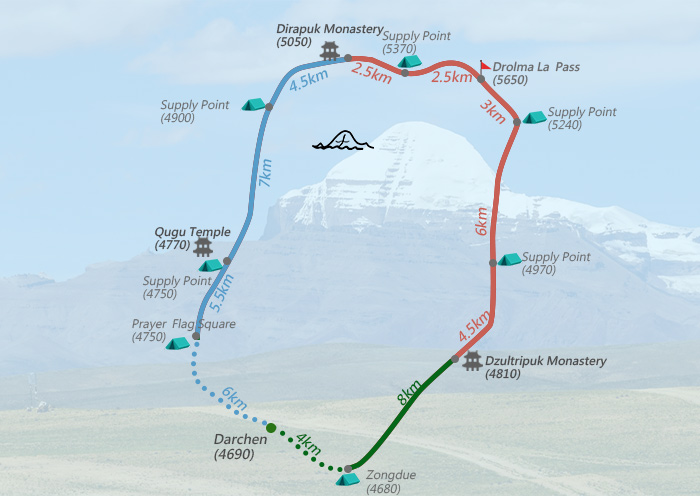

2. Mount Everest: The Highest Mountain in Tibet and the World
Mountain Location: Mahalangur Himal sub-range of the Himalayas, between Nepal and China
Mountain Elevation: 8,848.86 meters (29,031.7 feet)
Mount Everest, also known as "珠穆朗玛" or “Chomolungma“, the Goddess Mother of the World, holds the distinction of being the tallest mountain on Earth. This remarkable Tibetan Mountain is coveted by mountaineers worldwide, as it presents one of the most arduous and sought-after challenges.
Mount Everest commands respect with its imposing presence and perpetual covering of snow and ice. Despite the risks, its allure remains strong, drawing adventurers from across the globe to conquer its daunting heights.


Everest Base Camp: The Closet Site to World’s Summit
When you visit Tibet Mount Everest is a must-visit for sure. The Everest Base Camp offers a unblocked view of Mount Everest than the camp in Nepal.
To actually stand on the Top of the World would be challenging for most yet there’s always Mount Everest Base Camp at the altitude of 5,364 m (17,598 ft). It is a less challenging destination to be on the Top of the World. In the meantime there is a Mile Stone with Mount Everest Altitude on it at the camp, you take a picture with you, the Mile Stone and the world’s highest peak in the background.
Accessing the Mount Everest Base Camp: Not a Walk in the Park, but Easier than you Think
The journey starts in Lhasa, Tibet. Trekking trail through villages or driving straight up to the base are both possible.
A Panorama of Majestic Peaks : Unblocked View of the Mountain Everest like no others
At the Mount Everest Base Camp, trekkers witness breathtaking views of Mount Everest, Lhotse, and Nuptse. Snow-capped summits dominate the horizon against the blue sky.
Facilities and Activities at the Base Camp: Basic, yet enough
Basic yet comfortable accommodations in tents. Dining tents provide communal meals. Toilets and water facilities are available. Considering it’s practically the Top of the World there it’s enough for us traveller.
Activities include exploring the area, acclimatizing to altitude, short hikes to nearby peaks like Kala Pattar, and engaging with Sherpa communities to learn about their culture.
World’s Highest Monastery Right in Mount Everest
At an altitude of 5,154m, north side of Mount Everest, Rongbuk Monastery is the world’s highest monastery, a must-visit for spiritual travelers, and is also a good spot to admire Mount Everest. It used to be an area of meditation huts, and you can find hermitage meditation caves with a history of over 400 years, dotting the cliff walls all around the monastery and the valley.
Looking for Everest trip info? We have you covered right here: Everest Base Camp Altitude, How to Plan Everest Base Camp Trip, Best Time to Visit Everest Base Camp. With all the Tibet Travel Permits and local guidance being essential for a Tibet Mountain Trip, it is essential to get in contact with a reputable travel agency in advance to ensure a smooth journey to Tibet.
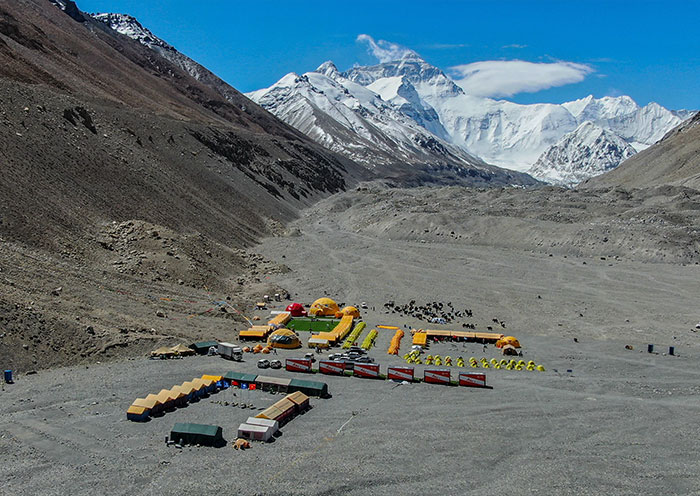
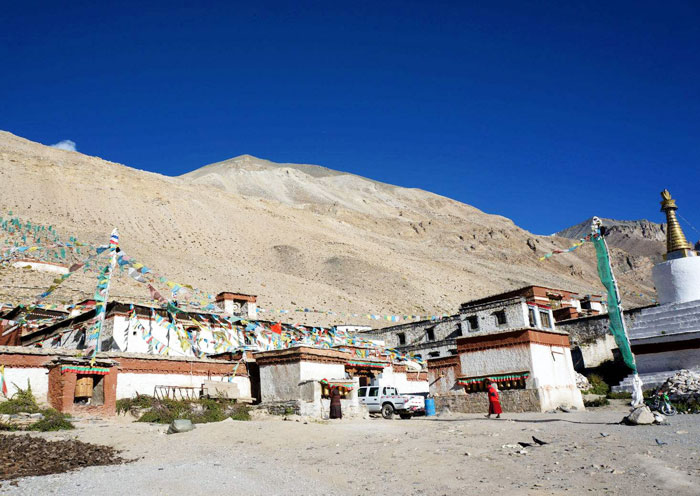
3. Namcha Barwa: The Highest Unclimbed Mountain in Tibet
Mountain Location: Nyenchen Tanglha Mountains, Tibet
Mountain Elevation: 7,782 meters (25,531 feet)
Significance: Namcha Barwa (南迦巴瓦) is the highest mountain in Nyingchi, warmer eastern Tibet with pleasant climate and lushy greens, and is considered to be one of the most challenging mountains to climb in the world. It has only been successfully summited a handful of times.
Namcha Barwa stands as the highest unclimbed mountain in the world. Located in Nyingchi, Namcha Barwa’s majestic summit, crowned with a pristine coat of snow and embellished with glaciers, has entranced mountaineers for countless generations. Revered as a sacred Mountain Location by the Tibetan community, Namcha Barwa is believed to house Beyul, a concealed valley of profound spiritual importance. Wrapped in ethereal mist, this mountain stands as a symbol of both natural grandeur and spiritual significance.
Namcha Barwa offers a challenging trekking experience, with trails winding through lush valleys, verdant forests, and high-altitude meadows. The journey to Namcha Barwa Base Camp unveils breathtaking vistas of the mountain itself and the majestic peaks that envelop it. This Nyingchi region is also a sanctuary for a rich variety of plant and animal life, boasting the presence of captivating creatures such as the red panda, musk deer, and golden eagle.
4. Chagpori: Pilgrimages’ Mountain Destination in Lhasa
Mountain Location: Lhasa, Tibet
Mountain Elevation: 2,300 meters (7,546 feet)
Situated in Lhasa, the capital of Tibet, Jampori Mountain (药王山) carries immense cultural and spiritual significance. The Mountain’s strategic position presents sweeping vistas of Lhasa, encompassing the iconic Potala Palace. A pilgrimage to Jampori Mountain is an essential undertaking for both devout pilgrims and curious tourists, as it conveniently lies within walking distance of the revered Jokhang Temple. Ascending Jampori offers a gratifying adventure, enabling visitors to forge a connection with the city's spiritual essence while reveling in breathtaking panoramas.

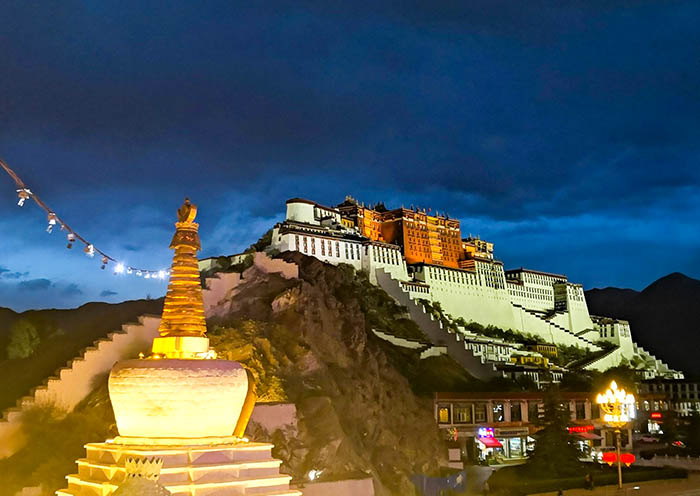
5. K2: The Second Highest Mountain in Tibet
Mountain Location: Karakoram range, between Pakistan and China
Mountain Elevation: 8,611 meters (28,251 feet)
Significance: K2(乔戈里峰), renowned as the "Savage Mountain," claims the title of the second-highest peak on Earth. It has earned this moniker due to its formidable challenges, marked by extreme difficulty and a perilously high fatality rate. The summit of K2 has been conquered successfully only a scarce few dozen times, further emphasizing the immense obstacles faced by mountaineers who dare to undertake this extraordinary feat.
Crystal Hunt: Discover the elusive K2 Crystal in the K2 Mountain region. Found exclusively in Skardu, northern Pakistan, this rare stone results from the fusion of azurite and granite under intense heat and pressure. Its captivating beauty lies in the striking blue spots embedded in the granite, making it highly coveted by collectors and jewelry enthusiasts.
6. Kunlun Mountains: The Longest Tibetan Mountain Traversed by Tibet Train
The majestic Kunlun Mountains(昆仑山脉), traversed by the Qinghai-Tibet Railway, which would get you to Tibet by Train captivate tourists with their scenic beauty. Passengers on the train are greeted with awe-inspiring vistas of snow-capped summits, deep valleys, and expansive plateaus as it weaves its way through this mesmerizing Tibetan mountain range. This extraordinary adventure promises an unforgettable experience for those who venture to explore this remarkable natural wonder of Tibet Mountains.
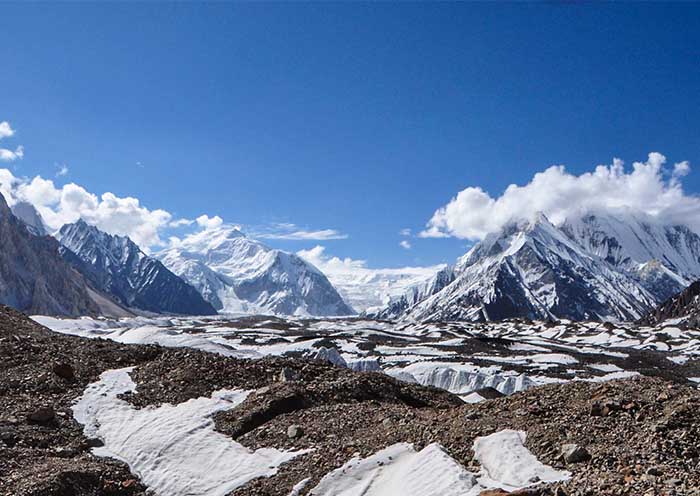
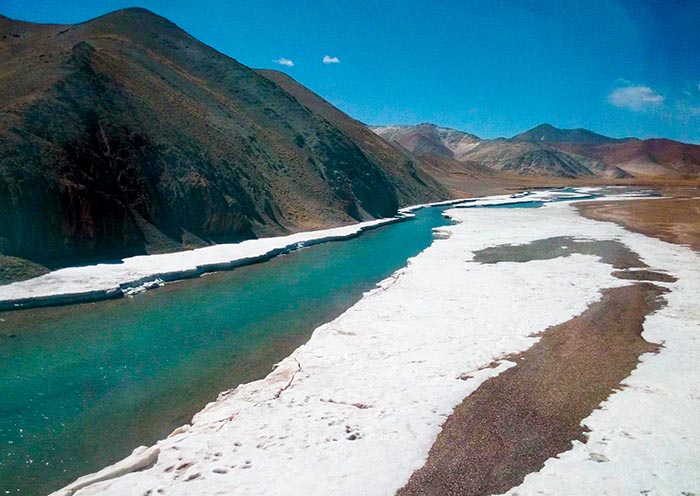
7. Tanggula Mountains: The Highest Gateway to Tibet on the Qinghai-Tibet Highway
Located in the heart of Tibet, the Tanggula Mountains (唐古拉山脉) are famous for their stunning natural beauty and cultural importance. This majestic range not only serves as the origin of the Yangtze River, the third-longest river in the world, but also showcases a captivating tapestry of snow-capped summits, crystalline lakes, and abundant wildlife in China.
The Tanggula Pass, at an altitude of 5,231 metres, is a necessary stop along the Qinghai-Tibet Highway into Tibet. This is the highest altitude highway in Tibet and the world.
For intrepid explorers, the Tanggula Mountains present an opportunity to venture through high-altitude terrain. The Tibet Mountain is a destination that guarantees an unforgettable odyssey of exploration and marvel.
8. Shishapangma: The Fourth Highest Mountain in Tibet
Mountain Location: Jugal Himal sub-range of the Himalayas, Tibet
Mountain Elevation: 8,027 meters (26,303 feet)
Significance: Shishapangma, also known as "希夏邦马" in Chinese, stands as the world's fourteenth-highest mountain. It enjoys popularity among climbers in Tibet for its comparatively manageable ascent when compared to other lofty peaks, making this Tibetan Mountain a sought-after destination for mountaineering adventures at high altitudes.

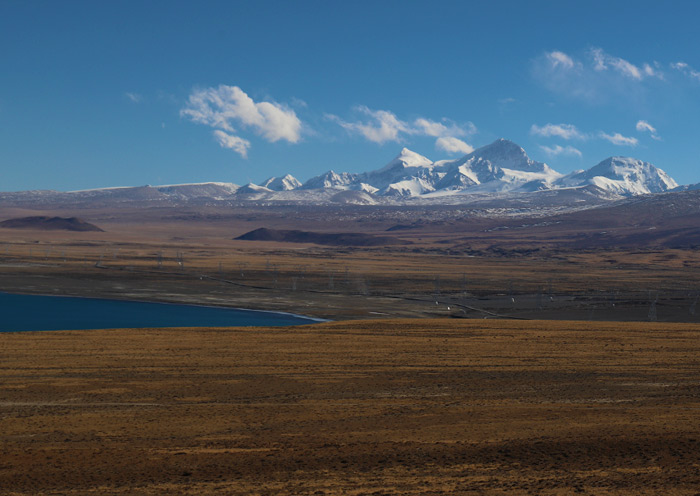
9. Mount Cho Oyu: The Sixth Highest Mountain in Tibet
Mountain Location: Langtang Himal sub-range of the Himalayas, Tibet
Mountain Elevation: 8,201 meters (26,906 feet)
Significance: Ranking as the sixth highest mountain globally, Mount Cho Oyu(卓奥友峰) holds the nickname of the "Turquoise Goddess" owing to its enchanting blue-green coloration. This majestic Tibet Mountain attracts a significant number of mountaineers, and it has witnessed successful summits by hundreds of individuals.
10. Gyachung Kang: The Highest Peak between Mt. Everest and Mt. Cho Oyu
Mountain Location: Mansiri Himal sub-range of the Himalayas, Tibet
Mountain Elevation: 7,952 meters (26,089 feet)
Significance: Gyachung Kang(格重康峰) is the 15th-highest mountain in the world, and is known as "Manaslu". While presenting a formidable challenge, this Tibetan Mountain offers a less congested climbing experience compared to other lofty peaks in the area.
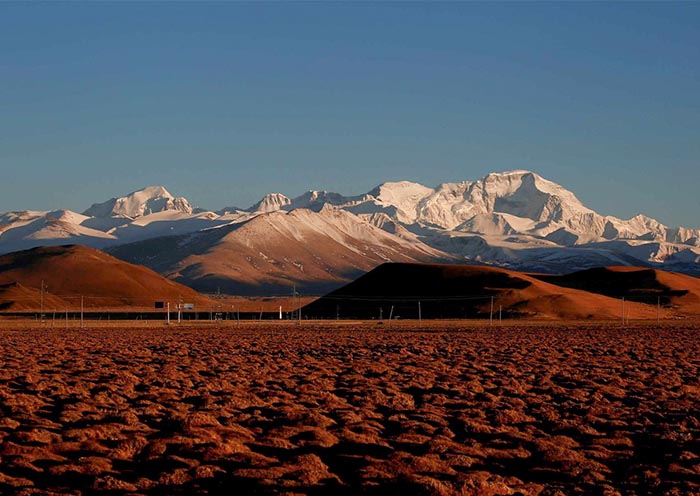
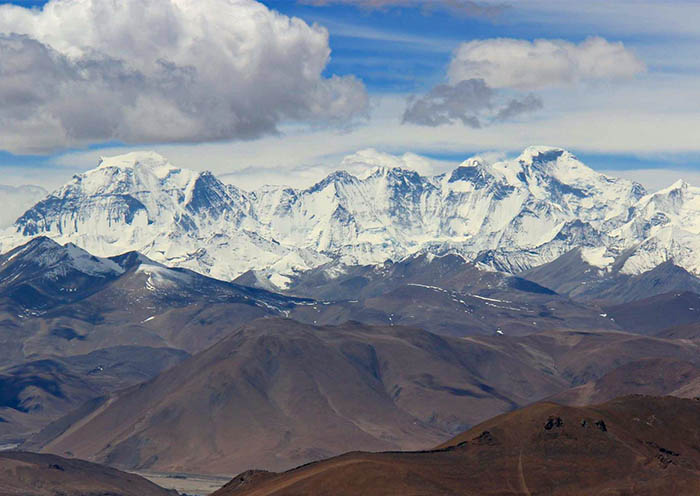
“Hiking Mate” is a Must to Climb Tibetan Mountains
To visit Tibet, especially if you are planning to Hike the Tibetan Mountains, it’s essential to apply permits and visa in advance. Here are the Permits you need:
Tibet Travel Permit: All foreign travelers must obtain this permit to enter Tibet, ensuring compliance with Chinese regulations, preservation of the environment and local culture, and ensuring visitor safety.
Alien's Travel Permit (PSB Permit): Necessary for travel beyond Lhasa, allowing exploration of other regions within Tibet.
Frontier Pass: Essential for trekking to Everest Base Camp (EBC) from the Tibetan side, regulating access and ensuring proper management of the route.
Mount Everest Climbing Permit: Highly restricted, with limited annual issuance, ensuring the safety and control of climbers attempting to conquer Mount Everest.
Mount Kailash Trekking Permit: Required to trek to the sacred Mount Kailash, allowing for regulated access and preservation of the pilgrimage route.
It might seem to be a bit of paperwork yet a professional travel agency would to get everything sorted out for you to ensure a smooth and hassle-free Tibet Itinerary.
As an agency who has been working in Lhasa for over 10 years, we are qualified to apply the permit for you.

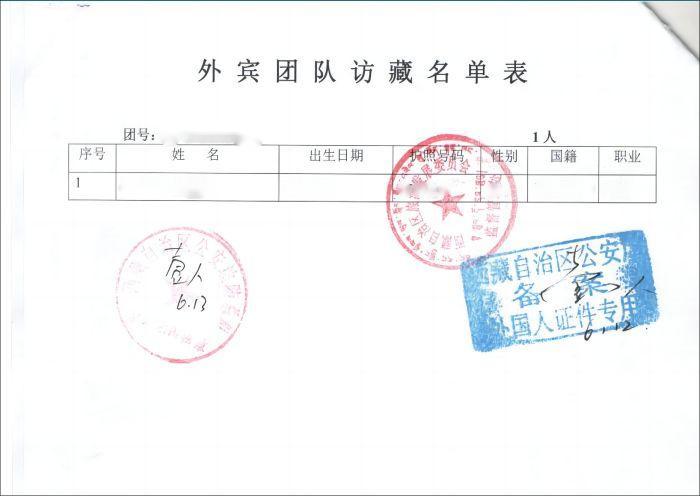
How to Plan Your Tibet Mountains Tours?
Experience an awe-inspiring expedition amidst Tibet Mountains, unveiling captivating peaks and revered summits. Delve into the magnificence of Mount Everest, the planet's loftiest pinnacle, or embark on the sacred pilgrimage surrounding Mount Kailash. Uncover lesser-explored peaks, encounter tranquil lakes, and immerse yourself in the vibrant culture and traditions intertwined with these hallowed lands. Prepare for an 8 to 15-day journey to fully embrace the splendor of Tibet's mountainous grandeur.
Here are some Curated Themed Itineraries
Tour Lhasa City - 4 Days
For 4 days, it is highly recommended to take: 4 Days Lhasa & Surrounding Tour
Add 2 or 3 More Days to Visit Gyantse & Shigatse
For 5 days, it is highly recommended to take: 5 Days Lhasa & Yamdrok Lake Tour
For 6 days, it is highly recommended to take: 6 Days Lhasa Yamdrok Lake Shigatse Tour
Add 2 More Days to Mount Everest
For 7 days, you can take 7 Days Classic Tibet Nepal Overland Tour from Lhasa to Gyirong via EBC
For 8 days, you can take Lhasa - Yamdrok Lake - Shigatse - Mount Everest - Lhasa for classic exploration
To extend further, you can cover Mount Kailash (3 Days), Guge Kingdom & Zanda Earth Forest (1 Day), Namtso Lake (1 Day), etc.
9 Days Panorama Tibet Tour from Lhasa to EBC with Namtso Lake
15 Days: Lhasa - Yamdrok Lake - Mount Everest - Mount Kailash - Zanda - Shigatse - Lhasa
Alternatively, you can just simply pick the Month You are Planning to Visit, choose your tour accordingly
Explore Tibet with Asia Odyssey Travel
With over 10 years of local expertise in Lhasa and Tibet (Xizang), our dedicated team at Asia Odyssey Travel brings you carefully curated Tibet tours for an authentic and unforgettable experience.
Drawing upon our extensive experience, we have meticulously crafted a range of Tibet tour packages, including Lhasa tours, Mount Everest Tours, Mount Kailash Tours, Tibet Trekking Tours, Tibet Train Tours, and Tibet Overland Tours. Whether you prefer the comfort and flexibility of a private tour or the budget-friendly option of a group tour, we have you covered without compromising on quality.
Additionally, we cater to various travel preferences, whether you wish to commence your Tibet tour from one of the popular gateway cities in China, embark on Nepal Tibet tours, or even explore the mesmerizing Himalayan region. Whatever you desire, Asia Odyssey Travel has the perfect tour to meet your needs, ensuring that your expedition to Tibet (Xizang) becomes an unforgettable adventure.
Travel with AOT to explore the highest mountains in Tibet!

